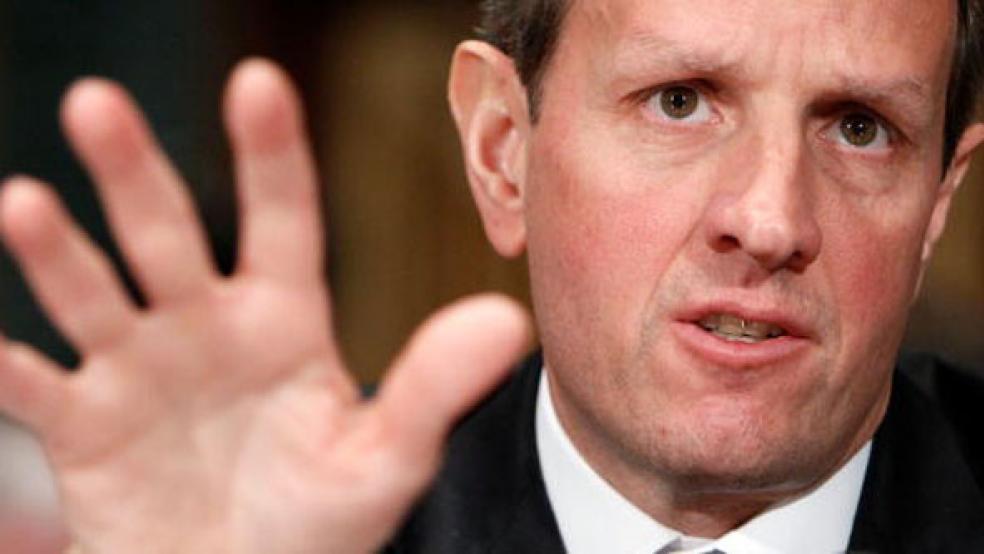The warning Standard & Poor’s issued Monday spooked investors, rattled the global markets and put added pressure on political leaders to cut the federal deficit. And while Democrats and Republicans may still be far from a budget deal that would simultaneously cut spending and raise the debt ceiling, the tone in political circles is that both sides are committed to working out a compromise.
If Congress does pull a deal out of the hat, it might stem the growing chorus of critics who think the U.S. is economically doomed because of its debt. For the first time, Standard & Poor’s lowered its long-term outlook to “negative” from “stable” based on the political paralysis in Washington. For weeks both sides have been sparring over how to slash the federal deficit, which is projected to reach $1.4 trillion this year.
“I see the S&P forecast much less about markets and more about political forecasting,” said Ethan Pollack, senior policy analyst with the Economic Policy Institute. “One party can’t do it alone. There is no candy, only medicine.“
The government will reach the $14.3 trillion annual debt ceiling sometime around mid-May. The Treasury Department has a number of accounting and borrowing strategies that can postpone running out of cash for several additional months. Treasury Secretary Timothy Geithner said Tuesday that a deal will be reached. “We have a chance to make progress on that just in the next couple of months,” he told Fox Business News. However, he has in past interviews insisted on separating negotiations over future spending plans from the debt limit vote.
Although the White House minimized the S & P warning, Press secretary Jay Carney said on Monday he believes the “political process will outperform S&P expectations.” President Obama said at a speech at Northern Virginia Community College on Tuesday that “there will be those who say that we’re too divided, that the partisanship is, is too stark. But I’m optimistic. I’m hopeful. Both sides have come together before. I believe we can do it again.”
Republican leaders were quick to jump on S&P’s report and offer it as evidence for why the $14.3 trillion debt ceiling should not be raised without spending cuts. House majority leader Eric Cantor, R-Va., said in a statement Monday, “S&P sent a wake-up call to those in Washington asking Congress to blindly increase the debt limit.”
The White House and the Republicans have proposed separate plans to slash approximately $4 trillion from the federal deficit over the next 10 or 12 years. The White House suggests raises tax revenue by allowing the Bush-era tax cuts to expire on high income earners. Republicans rejected that idea and said tax increases are off the negotiating table.
Some experts say the two sides are too far apart, and it’s unlikely they will come to an accord. “Historically, it’s hard to get anything of this magnitude done in the context of an election year,” said Chris Lehane, democratic strategist who worked on Al Gore’s 2000 campaign. “It’s not impossible. I could certainly see a situation where it would be in both the president’s interest and the Republican interest to compromise and come up with a solution.”
Meanwhile, the bipartisan group of six senators—three Republicans and three Democrats -- known as the “Gang of Six” have been meeting several times a week for four months behind closed doors on a compromise solution. Even with Congress on Easter recess, the senators will be talking regularly by phone about a deal, according to a senior Senate aide familiar with the talks. It’s unclear what the final package will include but there are indications that it would cut the deficit by $4 trillion over 10 years,” the aide said. Senate staffers will continue the conversations during the recess and are hopeful a deal will be struck soon.
"The warning from Standard & Poor's underscores the urgent need for Washington to act -- and to act quickly while we can -- to rein in America's ballooning deficit and debt,” said Sen. Saxby Chambliss R-Ga., in a statement. “It also validates the need for the measured, bipartisan approach our group has taken."
“This is one more warning sign that the financial markets are paying close attention to see if we are serious about addressing our budget deficits,” added Sen. Mark Warner, D-Va. in a statement. Insiders are hopeful an agreement between the Gang of Six can help bridge the divide.
“They seem to be doing this in very constructive ways with a seriousness and purpose,” Lehane said. “This isn’t a Kabuki dance.”
Aside from the brinksmanship on Capitol Hill, the credibility of S&P’s warning has come under fire recently. The Senate Permanent Subcommittee on Investigations issued a 635 page bipartisan report last week about the key causes of the financial crisis, concluding that the “most immediate cause … was the July 2007 mass ratings downgrades by Moody’s and Standard & Poor’s that exposed the risky nature of mortgage-related investments.” Rep. Dennis Kucinich, D-Ohio., said the ratings industry should be subject to greater oversight, regulation and fundamental overhaul.
S&P has also caught flack for its timing. “The timing was particularly stupid for the rating agency,” said Robert Shapiro, former U.S. Undersecretary of Commerce for President Bill Clinton. “We are probably in more serious talks and pre-maneuvering on a fiscal deal than we have been for at least two years. For the first time both sides are committed to the same goal.”
Related Links:
Obama, Geithner Optimistic About Deficit (Wall Street Journal)
Administration Defends Effort on Debt After Credit Warning (New York Times)
Obama Defends U.S. Deficit Plan, Sees Common Ground (Reuters)



